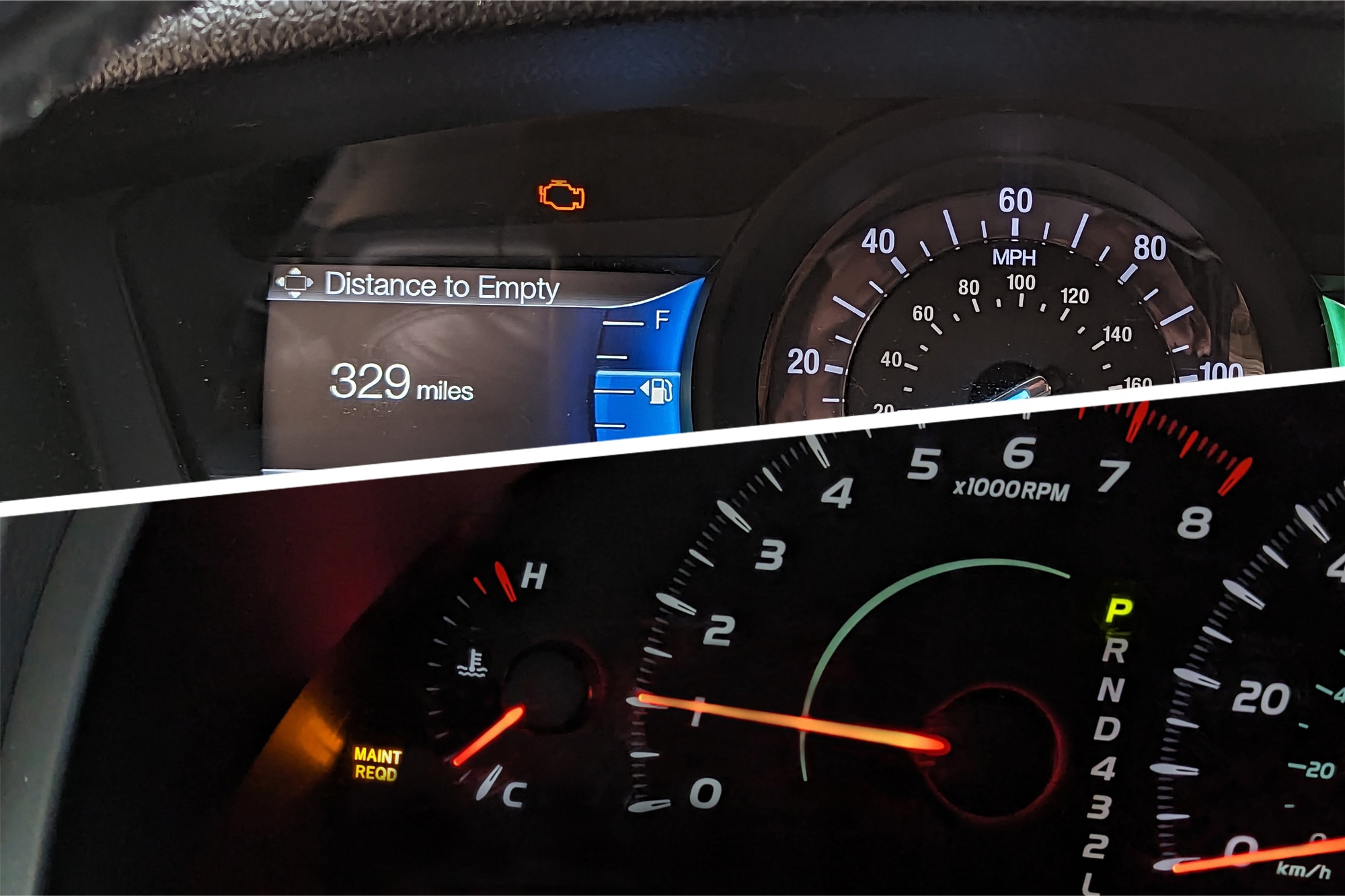The Difference Between a Check-Engine Light and a Maintenance Light
Spoiler alert: One is typically more urgent than the other.
 Austin Lott | Capital One
Austin Lott | Capital One
The dashboard of a modern vehicle is packed with warning lights, and many gauge clusters can also display messages about specific issues. Both check-engine icons and maintenance lights are common indicators in modern cars, but each conveys different information.
What Is a Check-Engine Light?
Every vehicle sold from 1996 onwards is equipped with a system called OBD-II. The OBD part stands for on-board diagnostics, which is a computer that watches your vehicle's major systems. Using a network of sensors, the OBD-II system can detect when there might be problems with the vehicle's engine, emissions equipment, or other components.
When an issue is detected, the check-engine light illuminates on your car's dashboard, indicating an OBD-II trouble code is stored in the vehicle's computer. Connecting a scan tool to the car's OBD-II scan port will reveal the code and allow you to take appropriate action.
Once necessary repairs are made, the code can be cleared from its memory banks. When dealing with emissions-related codes, often a number of trips must be taken and the system will clear the code itself once it confirms the problem has been repaired.
Some of the most common reasons for the OBD-II warning light to appear include cylinder misfires, catalytic converter problems, oxygen sensor failure, and emissions equipment issues.
What Is a Maintenance Light?
The majority of modern cars can keep track of the various maintenance intervals that help keep them in good running order. Most of the time, this means reminders about oil and filter changes and other fluid replacement cycles.
Depending on the implementation, maintenance systems might monitor the mileage between oil changes or rely on sensors that track engine operating temperatures to determine whether it's time to swap fresh lubricant.
Once the system has calculated that the required number of miles or time has passed or that driving conditions warrant it, a message on the vehicle's dash or instrument cluster appears to remind you that it's time for maintenance. This might be an icon in the shape of a wrench, a "MAINT REQD" type illuminated icon, or a more detailed message describing what type of maintenance needs to be performed.
After you have completed the needed service, the light can be reset to begin monitoring the new maintenance cycle. The procedure for doing this varies from vehicle to vehicle but is often readily found via a quick search on Google or even YouTube video, if you prefer a visual walk-through.
Check-Engine and Maintenance Lights Can Help Determine Repair Urgency
The key difference between check-engine and maintenance lights is urgency. A check-engine light indicates a problem with your vehicle that needs to be addressed for it to operate according to its original specifications. Depending on the code on the scan tool, you may have to take immediate action to avoid further problems or serious damage to your automobile.
A maintenance light means you should plan to book service at a dealership or repair shop soon. Although it's not a good idea to stretch the interval too far, you can generally schedule the required maintenance when it's most convenient without worrying about your car's health.
Written by humans.
Edited by humans.
 Benjamin Hunting
Benjamin HuntingBenjamin Hunting is a writer and podcast host who contributes to a number of newspapers, automotive magazines, and online publications. More than a decade into his career, he enjoys keeping the shiny side up during track days and always has one too many classic vehicle projects partially disassembled in his garage at any given time. Remember, if it's not leaking, it's probably empty.
Related articles
View more related articles